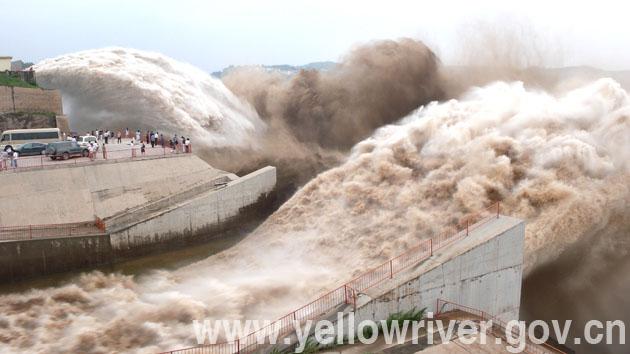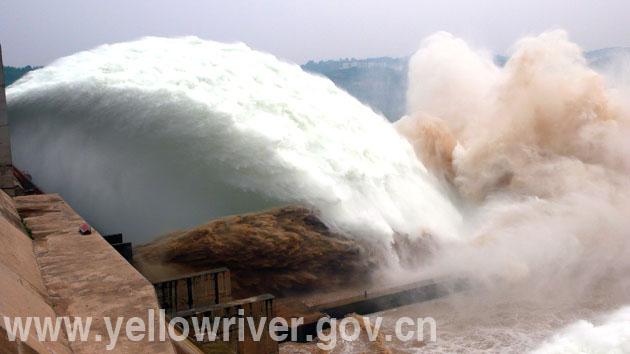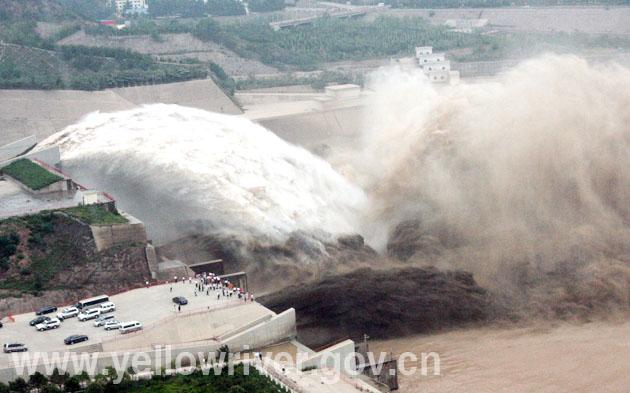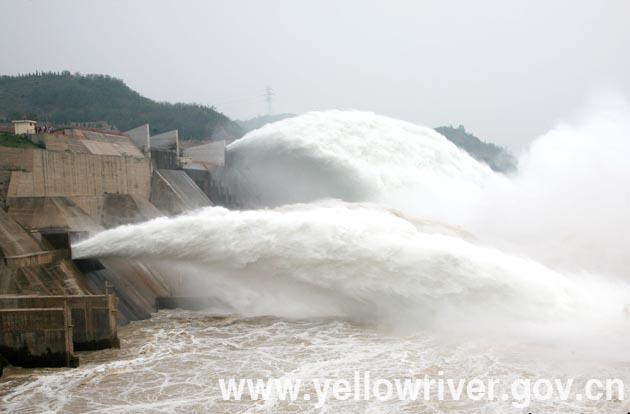




After several trials during three consecutive years from 2002 to 2004, the practice of sand washing officially began in 2005, enjoying the victory of seven operations held successfully by theYellow RiverWater Resources Committee.
This year s fresh round worked by discharging water from three reservoirs -- Wanjiazhai, Sanmenxia and Xiaolangdi --to clear up the sediment in the river, the country's second-longest waterway. Speeding currents carried tons of sand into the sea.
The 14-day project enabled the water to flow at a maximum volume of 4,000 cubic meters per second in the section below Xiaolangdi reservoir before it poured into the sea. Meanwhile, the maximum discharging water volume in Xiaolangdi reservoir reached 4,280 cubic meters per second. The bank-full discharge in the major lower reach now rises to 3,810 cubic meters per second from 1,800 cubic meters per second in 2002.
The technique, however, benefited theecological and environmental protection work. Since it was first used in 2002, freshwater flooded into the sea , bringing recovery and reconstruction of theYellow Riverregion s ecosystem a step further.
The Yellow River, China's second longest at5,464 km, flows from Qinghai Province in the northwest through Sichuan, Gansu, Ningxia, Inner Mongolia, Shanxi, Shaanxi, Henan and Shandong before emptying into the Bohai Sea.
Editor: HuangFeng
Related News
Photos
More>>trade
market
- Top emergency declared for worst drought in 50 years
- China launches orange alert for rare drought in north
- Yellow River Special Session of the 5th World Water Forum held successfully
- Vice Director Mr. Xu Cheng Participated Relevant Sessions of 5th World Water
- Vice Director Mr. Xu Cheng Collogued with International Friends
finance
- YRCC Delegation Participated in the UNESCO and INBO Sessions of the 5th World
- Mr. Xu Cheng met with Officials from International Water Institutions and
- YRCC Delegation Participated in the Opening Ceremony of the 5th World Water
- Experience of Yellow River Management embodied by the Third UN World Water
- Drought's effects worst in Gansu





